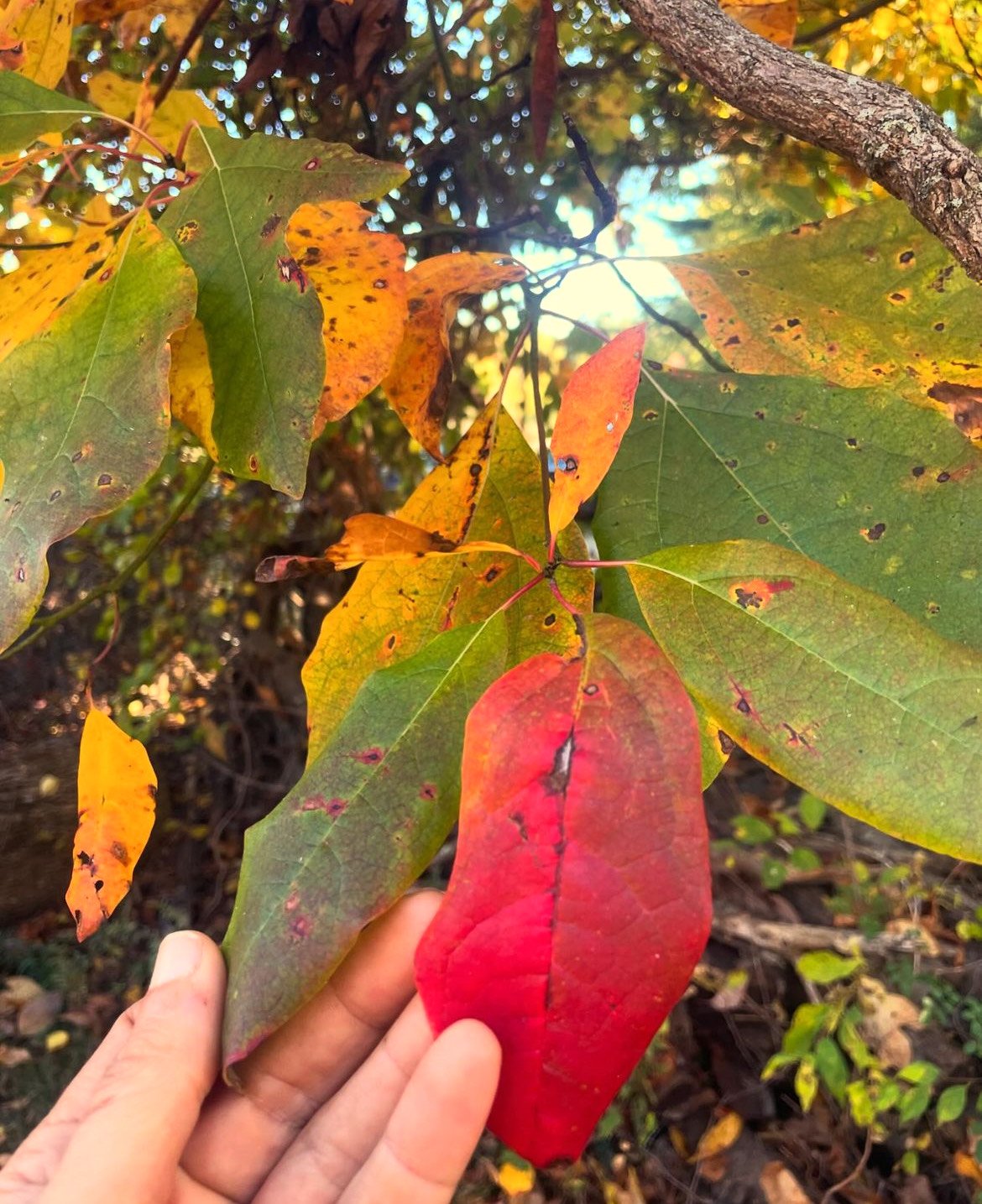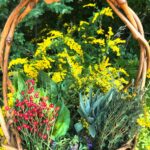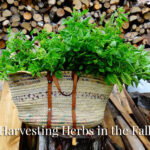
Like so many, I’m deeply enamored by the fall foliage, but even more so when I can make medicine with it. The Sassafras tree (Sassafras albidum) puts on such a show in the fall and, although the essential oils in the leaves are certainly more concentrated in the summer, the mucilage is still potent in the fall and lots of their aromatic and unique flavor is still present. I love gathering them now- when the trees are about to drop them anyway and they’re in their full autumnal glory.- and make a potent and delicious herbal honey with them. You can even gather recently fallen leaves for medicine!
This is an easy one to ID. It’s very distinctive in that it has 3 different shaped leaves (ovate, mitten-shaped, and three-lobed) that smell very fruity when crushed. In our bioregion, Sassafras grows as either a woody shrub or small tree in mostly sandy soils, the edges of dirt roads and/or areas that receive lots of disturbance.
Although the root bark is what’s most commonly worked with in herbalism, Sassafras leaves are also quite medicinal! They’re rich in mucilage- a thick, gooey, complex carbohydrate that excels at nourishing and protecting the skin and mucous membranes, both inside and out. It’s the same plant as filé, which is used to thicken gumbo, and the leaves are an excellent bioregionally abundant demulcent herb (a category of herbs that are mucilage-rich), which can be quite sustainably harvested when gathered in the fall in this way.




